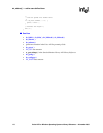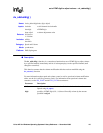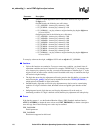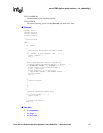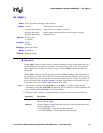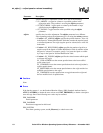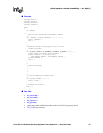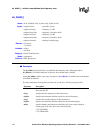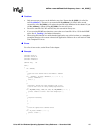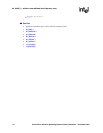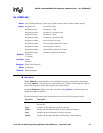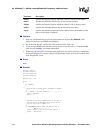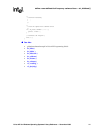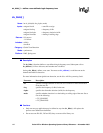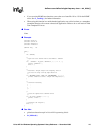
136 Voice API for Windows Operating Systems Library Reference — November 2003
dx_blddt( ) — define a user-defined dual-frequency tone
dx_blddt( )
define a user-defined dual-frequency tone
!
!!
! Description
The dx_blddt( ) function defines a user-defined dual-frequency tone. Subsequent calls to
dx_addtone( ) will enable detection of this tone, until another tone is defined.
Issuing dx_blddt( ) defines a new tone. You must use dx_addtone( ) to add the tone to the channel
and enable its detection.
For more information about global tone detection, see the Voice API Programming Guide.
Name: int dx_blddt(tid, freq1, fq1dev, freq2, fq2dev, mode)
Inputs: unsigned int tid
• tone ID to assign
unsigned int freq1
• frequency 1 in Hz
unsigned int fq1dev
• frequency 1 deviation in Hz
unsigned int freq2
• frequency 2 in Hz
unsigned int fq2dev
• frequency 2 deviation in Hz
unsigned int mode
• leading or trailing edge
Returns: 0 if success
-1 if failure
Includes: srllib.h
dxxxlib.h
Category: Global Tone Detection
Mode: synchronous
Platform: DM3, Springware
Parameter Description
tid specifies a unique identifier for the tone. See Cautions for more information
about the tone ID.
freq1 specifies the first frequency (in Hz) for the tone
frq1dev specifies the allowable deviation (in Hz) for the first frequency
freq2 specifies the second frequency (in Hz) for the tone
frq2dev specifies the allowable deviation (in Hz) for the second frequency
mode specifies whether tone detection notification will occur on the leading or
trailing edge of the tone. Set to one of the following:
• TN_LEADING
• TN_TRAILING



